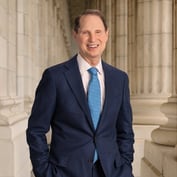What You Need to Know
- The current, emergency health insurance premium tax credit subsidy levels would become permanent.
- Either the net investment income tax or self-employment tax would apply to all individual income over $400,000.
- The definition of net investment would expand.
President Joe Biden has proposed a budget for fiscal year 2022 that could make the current, temporary increase in health insurance premium tax credit subsidies permanent.
The proposal could also increase the amount of tax revenue flowing into the main Medicare trust fund, by applying the net investment income tax or the self-employment tax to more of high-income taxpayers’ income, and by sending the revenue from the net investment income tax into the main Medicare trust fund.
Today, revenue from the net investment income tax goes to the U.S. Treasury.
The Biden administration has described the Affordable Care Act premium tax credit increase proposal on page 1,061 of the main budget appendix file.
The administration has described the proposed changes in the scope of the net investment income tax and self-employment tax in a section that starts on page 71 of the U.S. Treasury Department’s “greenbook,” or description of the Biden administration’s proposals for raising revenue.
Fiscal year 2022 starts Oct. 1.
The budget proposal, a document describing the Biden administration’s spending and revenue-raising ideas, is subject to review by Congress.
The Health Insurance Premium Tax Credit Increase Proposal
Starting in 2014, the Affordable Care Act began to provide tax credits for people who bought commercial major medical insurance through the ACA public exchange system — the family of web-based health insurance supermarkets that includes HealthCare.gov, Covered California and Pennsylvania’s new Pennie exchange.
Exchange plan users with income from about 138% of the federal poverty level to 400% of the federal poverty level could use the ACA tax credits to pay part or all of their insurance premiums.
In March, when Congress passed the American Rescue Plan Act of 2021, it tried to help uninsured people cope with the COVID-19 pandemic by providing richer premium tax credit subsidies.
One section of the law provided temporary subsidy help for all unemployed people. Another section, Section 9661, provided more generous subsidy levels for 2021 and 2022.
The Biden administration says in the 2022 budget appendix that it wants to “make permanent the premium tax credit expansion implemented in Section 9661 of the American Rescue Plan.”
An ACA premium tax credit subsidy is supposed to hold what a consumer pays in cash for health coverage to a certain percentage of the consumer’s “modified adjusted gross income,” or MAGI.
When the federal government describes ACA premium tax credit subsidies, it shows the maximum amount of MAGI that people will have to spend out of pocket to get covered. Once subsidy users pay their share of the premium bills, the government then pays the rest of the premiums.
Here’s how Section 9661 changed the share of MAGI that people must spend to get covered, when compared with the MAGI spending levels that were in effect before ARP took effect.
- 100% to 133%: 0% of (down from 2.07%)
- 133% to 150%: 0% (down from 3.1% to 4.14%)
- 150% to 200%: 0 to 2% (down from 4.14% to 6.52%)
- 200% to 250%: 2% to 4% (down from 6.52% to 8.33%)
- 250% to 300%: 4% to 6% (down from 8.33% to 9.83%)
- 300% to 400%: 6% to 8.5% (down from 9.83%)
- Over 400%: 8.5% (down from having no limit)
The Biden budget proposal does not appear to include the ARP temporary premium tax subsidy aimed at people who are unemployed.









 June 01, 2021 at 02:47 PM
June 01, 2021 at 02:47 PM











